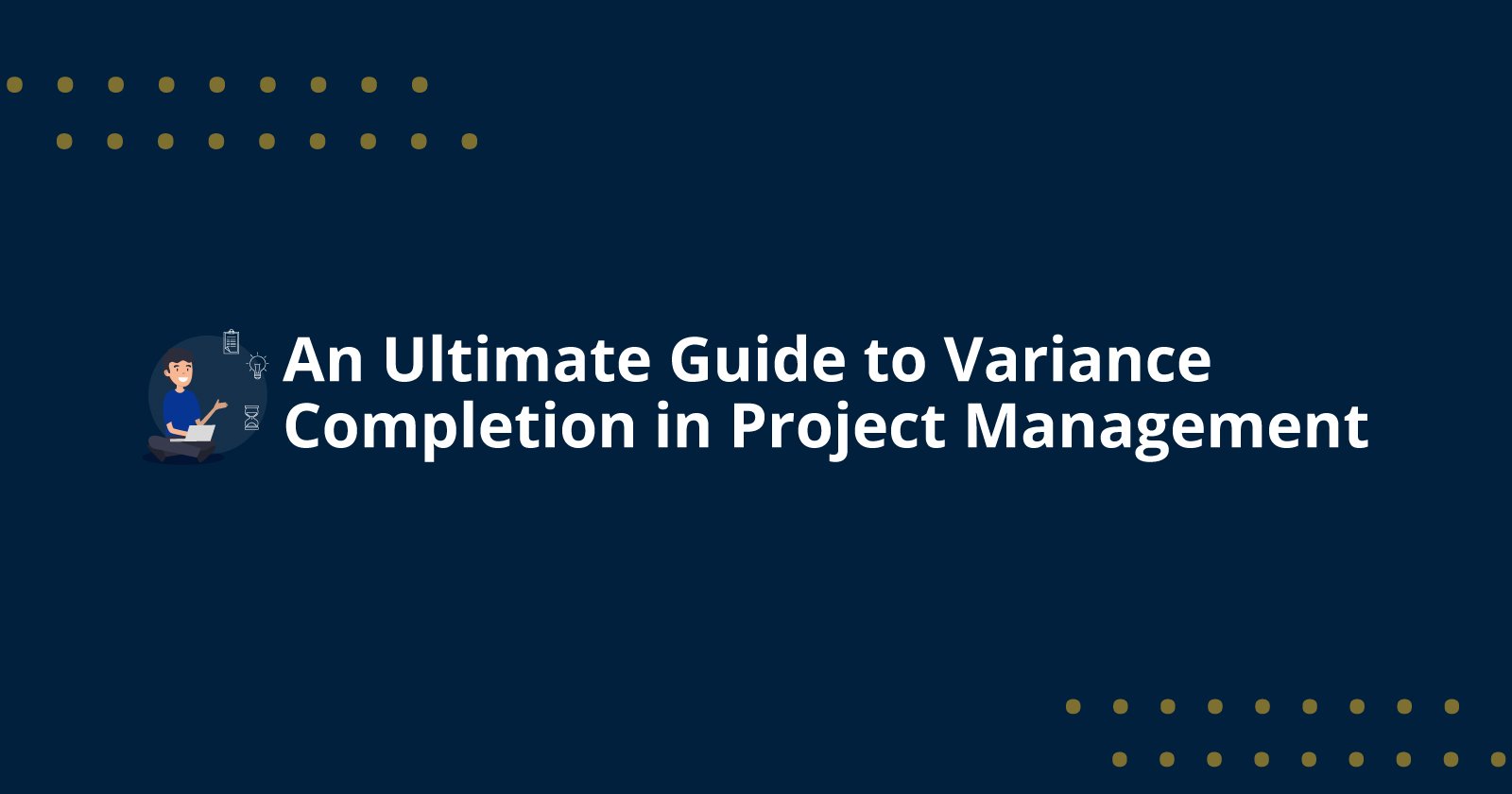Variance analysis is a key part of Earned Value Management (EVM) in project management. It compares actual performance against planned baselines to detect deviations and identify their root causes. This analysis helps project managers to identify projects that are over or under budget, ahead or behind schedule.
Budgeting is a key area of project management, presenting a financial outline for allocation of costs, its control, and managing risk. A properly developed budget facilitates better decision-making and leads to successful projects.
This budgeting is sometimes considered an unstable element due to future unpredictability. Project managers use Variance at Completion (VAC) to predict the final project budget and assess its financial health. This article is going to give you the ultimate Guide to Variance Completion in Project Management.
What Does Variance at Completion (VAC) Mean?
Variance at Completion (VAC) is a key metric measurement that forecasts the budget surplus or deficit at project completion. It helps project managers assess the overall financial health of the project and determine if corrective actions are needed to stay within budget.
Key Things VAC Does:
- Predicts Cost Overruns or Underruns
- Facilitates Proactive Budget Management
- Supports Informed Decision-Making
- Improves Project Planning and Control
The Project management institute’s introductory course CAPM Certification teaches project budgeting and cost control basics, helping aspirants understand Variance at Completion through practical, task-based learning
Why is VAC important for PMP Aspirants?
VAC is a useful forecasting technique for PMP Certification aspirants as It shows a clear snapshot of the financial performance of a project. It assists in forecasting possible cost problems. With VAC calculation, project managers can determine whether a project is under budget, over budget with the initial plan.
This PMP certification exam covers Earned Value Management (EVM), and VAC is a key component of EVM. Understanding VAC, its formula, and its implications is essential for success on the PMP exam.
Variance at Completion (VAC) Formula Explained:
There are two components used to determine or calculate the VAC:
Budget at Completion (BAC): The total planned cost of the entire project
Estimate at Completion (EAC): The expected or predicted total cost to complete the project based on the current performance. |
The VAC formula derives from the difference between these two components.
| Variance at Completion (VAC) = Budget at Completion (BAC) - Estimate at Completion (EAC) |
Interpreting the VAC value is an important thing to understand the stance of the project’s budget success.
- Positive VAC: This means that the project’s actual cost is lower than the initial planned budget. It shows good cost management and potential cost savings.
- Negative VAC: This denoted project’s actual cost exceeds the initially planned cost. This is a signal that the project crossed over budget and needs corrective actions.
- Zero VAC: It means the project’s actual cost is equal to as it's planned. It shows that the project is on track in terms of budget wise.
When to Use VAC in Project Management?
Variance at Completion (VAC) is used in various scenarios to monitor, forecast, and control project costs effectively.
1. Any Time During the Project: VAC is calculated at regular intervals weekly, monthly to ensure the cost of the project is on track against the initial plan. It helps identify early warning signs of budget deviations, and take timely corrective actions.
2. When Cost Variances (CV) Are Observed: if the project shows the signs of over or under budget, VAC helps to understand the exact value of the variance.
3. For Financial Forecasting: VAC is used as an early estimate to predict the project hits its original budget, this helps stakeholders anticipate budget overruns or savings before it completes.
4. To Communicate with Stakeholders: VAC offers a clear, quantitative measure of financial health, making it easier to explain cost performance to sponsors, clients, and executives.
5. To Make Informed Decisions: If any negative variance detected helps project managers take corrective actions like additional fund request, cost cutting measures and adjust project scope.
6. In Earned Value Management (EVM): VAC is a core EVM metric, working with other factors like Cost Performance Index (CPI) → Efficiency of spending and Schedule Performance Index (SPI) → Schedule efficiency.
7. When Evaluating Overall Project Performance: Help to Identify trends in financial performance for future project improvements.
Case Study: Managing Budget Overruns Using VAC
A $1 Million commercial office building project, half way through its 12 months timeline, faced significant budget challenges.
Project Overview:
|
Key Metrics at the 6-Month Mark:
| Metric | Value |
| Planned Value (PV) | $500,000 (50% of work should be done) |
| Earned Value (EV) | $400,000 (40% of work actually completed) |
| Actual Cost (AC) | $550,000 (actual spending so far) |
| Cost Performance Index (CPI) | EV / AC = 400,000/550,000 ≈ 0.73 |
| Schedule Performance Index (SPI) | EV / PV = 400,000/500,000 = 0.80 |
Step 1: Calculating Estimate at Completion (EAC):
The project is currently over budget and behind schedule. To predict the final cost, we use the CPI-based formula:
This means the project is expected to cost $369,863 more than planned if current trends continue.
Step 2: Calculate Variance at Completion (VAC)
VAC measures the difference between the original budget (BAC) and projected final cost (EAC).
The negative value confirms a significant budget overrun. Without intervention, the project will exceed its budget by nearly 37%.
Step 3: Revised Forecast (After Corrective Actions)
Find the root causes like high material costs, inefficiencies in labor, and weather-related delays. To manage these, renegotiated supply contracts, streamlined labor, increased weekend shifts.
So using corrective actions improve CPI into 0.90, the new EAC would be:
The revised VAC is still negative but improved, Corrective measures cut the project's cost overrun from 369,863 to 111,111, saving $258,752 (70%).
Though still in over budget, early VAC analysis and interventions significantly minimized financial risk. So VAC serves as a clear early warning sign, prompting managers to investigate causes and implement corrective measures immediately
Conclusion
As final thoughts, VAC is a best predictive method for final budget outcomes. Reduces the over cost to stabilise financial control. By analyzing VAC at key project milestones, project managers are able to mitigate risks in advance, find the possible reductions on expenses, and maintain stakeholder confidence.




















